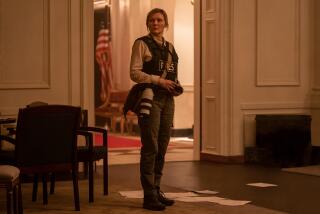War’s Words and Images Fight for Our Attention
- Share via
When lives are suddenly overturned by a rising of the waters or a convulsion of the Earth, we tell ourselves we’ve been thrown about by an “act of God.” But the recent violence has been decidedly man-made, and its tremors are felt in every part of the globe.
For many enemies of the United States, the war began long before Sept. 11, on different fronts around the world. For the other side, wishing the Taliban were not in power and hunting down Osama bin Laden are nothing new.
But much older than the current physical war is the war of perceptions, fought with words and images on both sides, and often centering on the virtue of the image itself (the Islamic world refusing any human images at all in its mosques and its holy books, even as modern America can seem a cathedral of the image and icons of a more secular kind). The war sets the haves against the have-nots, and the cultures of speed against the cultures of slowness, but most of all it puts those who believe in the future against those committed to the past.
The debate in the United States may center on Islam. But the debate in many other places around the global campfire centers on the United States--the model of modernity and the dominant force that shapes the consciousness and conditions of the global order. The victims on both sides, as ever, have been symbols, not so much of nations (as in the past) as of whole visions of the world.
One of the deepest ideas in classic Islamic thought centers on the inner jihad, the inward aspiration (since jihad means “effort” or “struggle,” and has nothing to do with war, as it is usually translated in the West) that takes place in every soul, regardless of its religious denomination.
This is a daily struggle, and it is played out every time a stranger accosts us in the street or another beckons us toward an open door. Which of the voices inside us will we listen to, and how do we make sure the best in us is not hostage to the worst? More profoundly, how much do we blame others for the setbacks in our life, and how much do we blame ourselves? A doctor comes forward with a grave diagnosis, and something in us cries out against a world that makes no sense, while something else tries to find a hidden, higher sense.
For the vast majority of the world’s people--following recent events as in a kind of planetary town hall, transfixed by images--the horror has been compounded by the sense of helplessness as we watch moments whose consequences affect us all but whose causes lie far beyond us.
But in the war of perceptions, none of us is powerless. We may not be able to control our circumstances, but we can always control to some extent how we respond to them and in what light we choose to see them.
We can choose at every moment whether to take our cues from CNN or from some holy book and whether to see the fighting in terms of the two sides or of what lies beyond them.
The airstrikes will end at some point, and yet the enmity between incompatible visions of the world will certainly go on. For most of us, the important question is not what we think and feel now but what we will think and feel when it’s all over.
The United States’ challenge, in the war of perceptions, is to restore its image as a haven of peace and a stronghold of freedom and tolerance. The Islamic world’s task is to make sure that its true doctrine of forbearance and charity not be blotted by a few.
But perhaps the greatest challenge is the one facing each of us, however far we may be from the line of fire: How much do we allow ourselves to be ruled by the current conflict and how much by whatever values and beliefs will outlast it?


